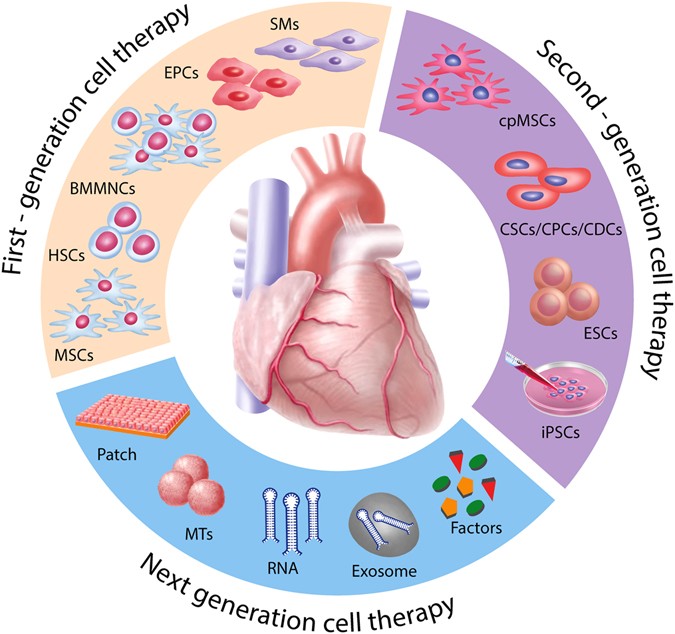Table of Contents
Damages to the heart muscle from decreased blood circulation. Weakening of the heart muscular tissue.

Our process includes: We start by extensively reviewing each person's clinical history, current heart feature, and overall health and wellness. This includes innovative diagnostic imaging and screening to determine the level of heart damages.
Numerous patients report much less fatigue, enhanced breathing, and far better physical endurance. By addressing the origin, stem cell therapy decreases the risk of future cardiac occasions. Our clinic is a leader in, combining expertise with compassionate care. Right here's what sets us apart: Our group has years of experience in regenerative medication, guaranteeing the highest possible degree of care.
We incorporate stem cell therapy with complementary therapies for detailed cardiac care. Every therapy strategy is personalized to address the special needs of each client. One of the most usual concerns we receive is, While no therapy can assure complete turnaround, have actually revealed substantial capacity to fix damaged cells, reduce swelling, and boost overall heart feature.
Is stem cell therapy right for Arrhythmias in today’s clinics?
Heart illness is a leading cause of in the United States and worldwide. For several individuals, standard therapies offer hope and assistance.
Today, researchers focus on 2 main kinds of stem cells: grown-up stem cells and beginning stem cells. While similar, they're far from similar, and each has its benefits and drawbacks. Grown-up stem cells often originate from bone marrow, fat tissue, or perhaps straight from the heart. One benefit is that they can be harvested from your own body.
Grown-up stem cells are additionally easier to collect and have fewer honest issues. There's a disadvantage. They're not as versatile as embryonic stem cells. They aren't as able to transform into different sorts of cells, which can limit effectiveness when it concerns tissue fixing. Beginning stem cells can develop into any sort of cell, consisting of heart cells.

There are some honest arguments around their use, as they're derived from early-stage embryos. Plus, there's a higher threat of immune denial because they're not from your very own body. An additional concern is the opportunity of creating tumors if these cells do not distinguish properly after implantation. The huge concern is, does stem cell treatment really work for heart fixing? The short response is that it has a great deal of capacity, but it's still a developing field.
Researchers are still figuring out the finest ways to supply the cells, ensure they survive once inside the body, and make sure they integrate correctly with existing heart tissue. One of the most significant difficulties is cell survival and integration after implantation.
What to know about using stem cells to support Heart Failure
Even fewer take care of to incorporate right into the existing heart cells. For the therapy to be reliable, the new cells need to connect with the old ones and start functioning as component of the heart muscular tissue. Getting them to do that is difficult. Issues like inflammation, immune being rejected, and the rough environment of a damaged heart can all trigger troubles.
It's something to get stem cell treatment to function in a lab or a little scientific test; it's another to make it available widespread. Producing, saving, and providing stem cells securely and efficiently is logistically challenging at best. Stem cell treatment is really encouraging, but it's not without downsides.
This is even more of a worry with embryonic stem cells, but it's present even with grown-up cells. Stem cell therapy is costly, partly since of the intricacy of harvesting, expanding, and supplying the cells.
In the last several years, there has been a substantial improvement in stem cell therapy for heart condition. Can stem cell therapy cure heart illness?
New hope for Peripheral Artery Disease via regenerative medicine
Medical professionals treat cardiac arrest symptoms in hopes of improving the client's quality of life and avoiding further complications. Medications like diuretics (to remove the fluid in the body), Beta-Blockers (reducing the pressure of the blood flow and reducing the heart beat to reduced blood pressure), and ACE Preventions (lower blood stress by relaxing the blood vessels and arteries) are used to deal with the signs of heart illness.
These call for an operation and a healing time of up to 6 weeks. While existing therapies manage the signs and symptoms of cardiovascular disease, they do not repair tissue damages or bring back the heart's feature. There is no cure for cardiovascular disease. The inquiry remains, can stem cells cure cardiovascular disease? Stem cells can not heal heart problem, but they can renew the heart muscle mass and improve the ejection portion (the quantity of blood the heart pumps with each beat) on the heart's left side.
Navigation
Latest Posts
New hope for Arrhythmias with stem cell therapy
Breakthrough option for Peripheral Artery Disease via regenerative medicine
Breakthrough option for Peripheral Artery Disease with stem cell therapy